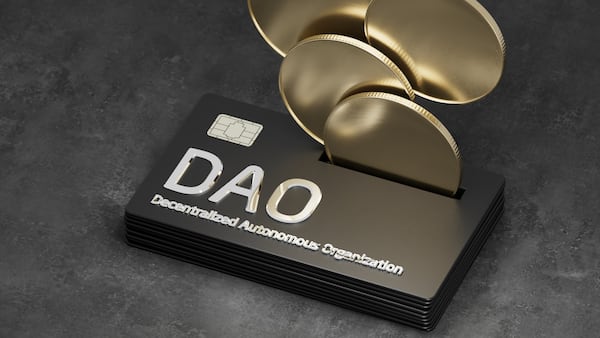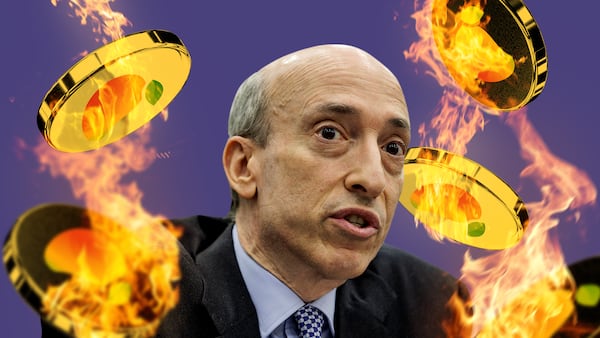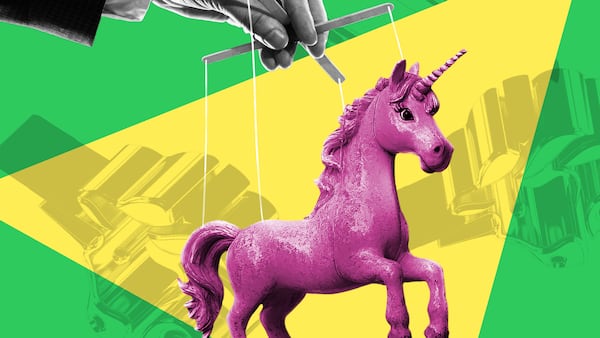- Mantra’s 89% nosedive is the latest challenge for the project.
- DAO members have previously been accused of misappropriating funds.
Blockchain project Mantra has denied responsibility after its OM token nosedived 89% on Sunday.
The sudden move, which shed some $5 billion from OM’s market value, left investors scrambling for answers. Many were quick to accuse the project itself of foul play.
“Today’s activity was triggered by reckless liquidations, not anything to do with the project,” the official Mantra X account said shortly after the crash. “One thing we want to be clear on: this was not our team.”
It’s a situation that’s become all too common among loosely regulated crypto projects. Investors, lured in by rising prices, buy up heavily marketed tokens, like OM. Yet key information, such as financial records, are often missing.
It’s like buying shares in a company without knowing how much money the company makes or who the other owners are.
At the start of the year, Mantra’s OM token surged 145% to hit an all-time high of $8.99. It now trades for around $0.70. It is now the 107th biggest cryptocurrency in the world, with a market cap of around $706 million.
To be sure, the OM token’s sudden fall was greased by several large liquidations totalling $75 million, according to Coinglass data.
Yet what initially caused the cascade isn’t clear.
Founded in May 2020, Mantra says it is a blockchain built specially for the issuance and trading of tokenised versions of real-world assets, like stocks and bonds.
The project operates as a decentralised autonomous organisation, or DAO. This means OM token holders can propose and vote on changes to the Mantra blockchain.
Before the crash, users had deposited just $4.2 million to DeFi apps on Mantra, despite its OM token trading at a whopping $6 billion market value.
Red flags
Investors had several reasons to be cautious about Mantra and its OM token before the sudden Sunday drop.
In April 2023, a Hong Kong court ordered six members of the Mantra DAO to disclose financial records dating back to January 2021 after other Mantra DAO members and the project’s infrastructure provider, RioDeFi, accused them of misappropriating funds.
The plaintiffs accused the group, which included Mantra CEO and co-founder John Patrick Mullin, of failing to produce regular financial reports, treating Mantra as their own, and making unauthorised withdrawals of crypto.
Mullin told DL News he and the other defendants have since settled with the plaintiffs and have an “amicable” relationship with them.
Others have accused Mantra of engineering its high market value using the outsized amount of OM tokens under its control.
Blockchain records show a single wallet on the Mantra blockchain holds about 77% of all tokens in circulation. This is an unusual situation among DAOs, which aim to distribute their tokens widely in the name of decentralisation.
Detractors allege that the remaining pool of around $500 million worth of OM tokens propped up its $6 billion market value before Sunday’s crash.
A spokesperson for Mantra did not respond to a question about the OM token’s high market value.
Mullin said in March that the wallet in question contained dummy tokens that are part of a mechanism for keeping track of token data across multiple blockchains.
The Mantra CEO has also long claimed that more than 90% of the OM token has been “distributed.”
There’s also the question of Laser Digital, one of several crypto venture firms that invested in Mantra in May 2024.
A wallet labelled as belonging to Laser Digital on blockchain data platform Arkham Intelligence deposited over $41 million worth of OM tokens to crypto exchange OKX on April 11.
A spokesperson for Laser Digital told DL News that it has not deposited any OM tokens to OKX.
“The transfer from a tagged Laser wallet represents the return of collateral upon the expiry of a financing trade with a third party,” the spokesperson said. “Our core OM investment remains locked.”
Tim Craig is DL News’ Edinburgh-based DeFi Correspondent. Reach out with tips at tim@dlnews.com.







